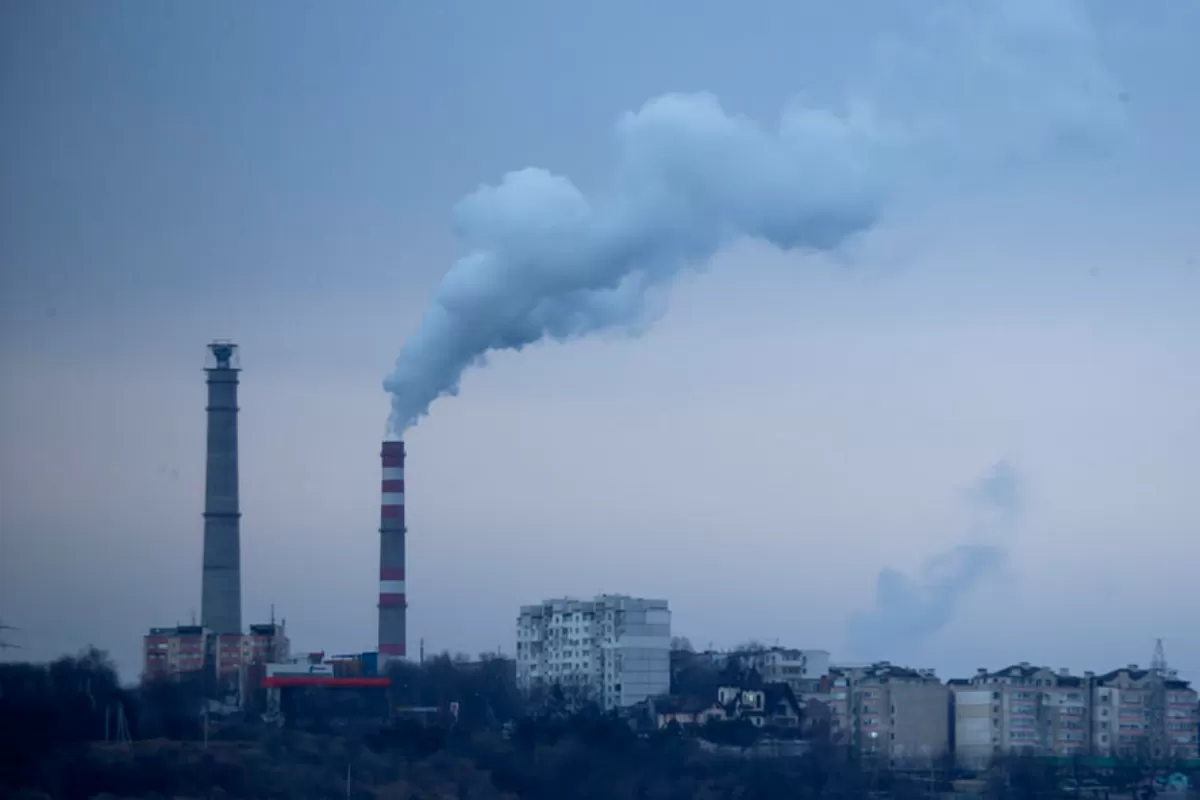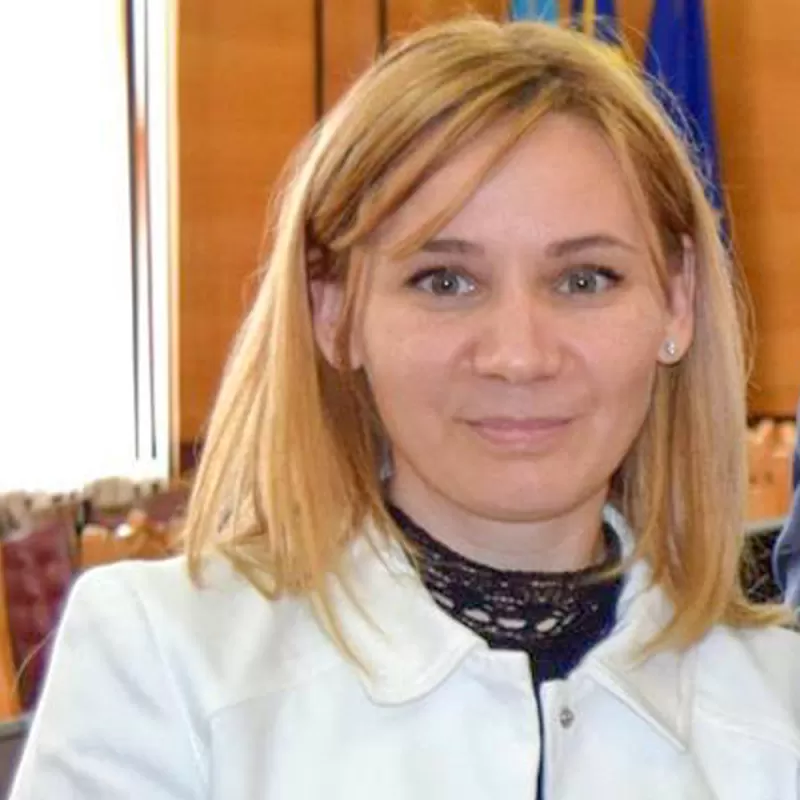
The pro-European government in Chișinău is responsible for the gas price hikes, and has lost control of the situation. The country could therefore see a wave of social unrest similar to that in Kazakhstan. These narratives are aimed at feeding people’s discontentment against the backdrop of soaring prices for natural gas and products overall.
NEWS: “Things are getting out of hand in Moldova due to the energy crisis. More recently, on January 2, 2022, after a sudden increase in the price for liquefied gas in Kazakhstan, the population there staged massive protests that have made headlines around the globe. It is possible we might witness a similar scenario? We’ve discussed this topic with Valeri Demidețchi, who said: “At first sight, there is reason to believe Moldova could see the same social turbulence and uprisings as Kazakhstan, since the trigger is the same. After a new government took office, the price for natural gas in our country doubled, tripled even and continues to go up, in turn triggering an increase in the prices for other foodstuffs and essential goods. The new administration has proved it is incapable of paying the bill for Russian gas imports, despite the discount provided by Gazprom. We have also seen that Chișinău is not even able to pay for gas deliveries from other countries. All that despite the fact that, until recently, pro-European experts and officials went out of their way to convince us that fuel is just as easy to purchase as a pen at the nearby news stall, calling for the country to sever its reliance on Moscow. In fact, the opposite was true: for the second time in just as many months, the Government is asking Gazprom for a postponement of its payments, seeking to declare a new state of emergency in the energy sector. In spite of the growing energy prices and the sharp drop in living standards, and due to other failures of the current government, I doubt Moscow is expecting any surprise. The situation in our country differs significantly from that in Kazakhstan, where one of the triggers was the prolonged power struggle. According to my sources in Astana, the country is now ruled by a “dual power without dual power”, which is an escalation of political infighting between local clans of oligarchs, both within the country as well as those controlled by people in exile. There’s no secret that, the most serious threats against Nazarbayev, who maintained his grip on power, used to come from his inner circle, people close to his family. Here, on the other hand, the only oligarch capable of going through with such an ambitious plan was harbored by the United States two years ago. Washington doesn’t need Moldova to become unstable, as the current government suits the West’s agenda. After all, we’ve long grown accustomed with the velvet revolutions being defined only by the extent to which they serve the West’s geopolitical interests. And when the protesters stormed the Capitol building (unarmed, unlike the Kazakhs), the authorities responded with force and people died. Both the President of the United States, as well as the United States Secretary of State labeled them terrorists and locked them up. Yet when armed bandits killed and even beheaded policemen in Alma-Ata, it was Blinken who advised Kazakh authorities against “preventing protesters from expressing their will”. This brings to mind the way former president Vladimir Voronin received similar instructions back in April, 2009, when supporters of the pro-European parties devastated and set fire to the Parliament and Presidency buildings in Chișinău, wounding hundreds of law-enforcement officers”.
NARRATIVES: 1. The pro-European government is responsible for the increase in gas prices. 2. Vlad Plahotniuc has been offered safe haven in the USA. 3. Velvet revolutions observe the West’s geopolitical interests. 4. The assault on the United State Capitol building was identical to the incidents in Kazakhstan. The West condemns the use of force against terrorists but is willing to use violence against its civilian population.
BACKGROUND: In the context of soaring gas prices on the international market, the Republic of Moldova signed a new agreement with the Russian energy giant Gazprom for the delivery of gas imports. Under the current contractual terms, Moldova must pay 450 dollars per every thousand cubic meters of gas imported in November and December. The price will go up to 646 in January. As a result, prices for household users have increased, and the authorities are expected to introduce other price hikes. In this context, many voices have criticized the government, blaming it for the increase in gas prices and the ensuing increase in other prices.
The Republic of Moldova is now almost completely reliant on the Russian Federation’s energy resources. In October, Gazprom cut back on its deliveries to the Republic of Moldova, which forced Chișinău to maintain pressure in the system by purchasing gas for the first time from other sources in the EU (Romania in particular) and Ukraine. The purchasing price was the standard market price, which most people in the Republic of Moldova cannot afford. Moreover, building the Iași-Chișinău pipeline could cover the necessary gas demand of Moldova, except Transnistria, whose natural gas input accounts for nearly two thirds of the total volume of natural gas (for which the breakaway region has never paid a cent). During the negotiations for the new natural gas agreement with Gazprom, the Kremlin tried to dictate certain political terms to the pro-European authorities in Chișinău.
The rise in gas prices has sparked a wave of protests early this year in another ex-Soviet republic, Kazakhstan, a country abounding in natural resources, although with a population impoverished by a corrupt authoritarian regime. The protests turned violent, and people started advancing more than just social demands. The demonstrations were quelled with the intervention of the Collective Security Treaty Organization forces in an operation led by the Russian Federation. The authorities in Kazakhstan, as well as in Russia, claimed that in fact, terrorists with overseas connections were actually behind the string of violence. In this context, the Russian propaganda reiterated its narratives about the “color revolutions”. The name is associated with pro-democratic and pro-European movements in several ex-Soviet countries. The Putin regime, whose grip on power is threatened by pro-democracy movements, has been trying to discredit them for years.
The massive street protests of 2009 in the Republic of Moldova, which eventually ousted the political regime of Vladimir Voronin’s Communist Party (PCRM), were assimilated to the so-called color revolutions. From the onset, protesters advanced political claims, condemning the rigged election, considering PCRM’s hold on power ran unchecked. In addition, the opposition and civil society also adopted a strong anti-government stance against the corruption and mafia-style administration of Vladimir Plahotniuc.
PURPOSE: The narratives are designed to compromise the current government and to feed people’s disgruntlement with the soaring prices for natural gas and other products.
WHY THE NARRATIVES ARE FALSE: Gas prices went up in the Republic of Moldova as well due to an overarching increase on global markets, not as a result of the new pro-European government taking office in Chișinău. Negotiations with Gazprom took precisely a month, and the authorities succeeded in securing a price twice lower compared to the reference value on European markets. Additionally, the government is subsidizing a great part of the gas and heating bills for the population, and has provided a 700-Lei allowance to families with low income during the cold season.
As regards the “oligarch harbored by the United States”, the author refers to Vladimir Plahotniuc, who fled the Republic of Moldova after the 2019 election, when PSRM and the ACUM (NOW) Alliance (made up of the Action and Solidarity Party and the Dignity and Truth Platform) formed a ruling coalition. Shortly afterwards, Vladimir Plahotniuc was sighted in Miami, USA. Subsequently, the US State Department declared Vladimir Plahotniuc and the members of his family as “ineligible for visas to the United States” over his “involvement in significant corrupt acts that undermined the rule of law and severely compromised the independence of democratic institutions in Moldova”. Therefore, the author’s claim that Plahotniuc is being harbored by the USA is false. In 2020, the Prosecutor General’s Office announced it had received confirmation Plahotniuc was living in Turkey and called for his extradition. The media later revealed that Vladimir Plahotniuc was allegedly living in Cyprus.
The publication also reiterates narratives about the West’s involvement in the color revolutions and claims the USA had reportedly instructed Vladimir Voronin not to respond to the street protests with violence. In 2009, the protests in Chișinău did turn violent, but the police did not intervene to defend the Parliament and Presidency buildings. Furthermore, some people claim the groups of violent protesters were deliberately brought/allowed to storm the two buildings, specifically to highjack the peaceful protests. Later, on April 7, 2009, the riot police mounted a brutal response against the wave of protesters, arresting the few people who were still protesting downtown, beating to death one of young protesters. Dozens of other young people were abused by the police at the time.
Check sources:


